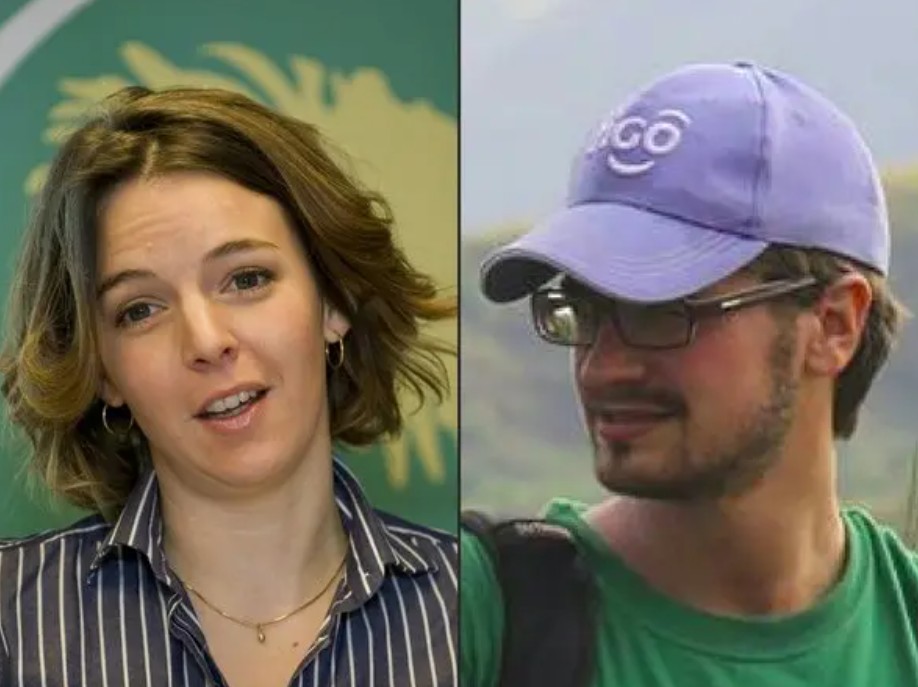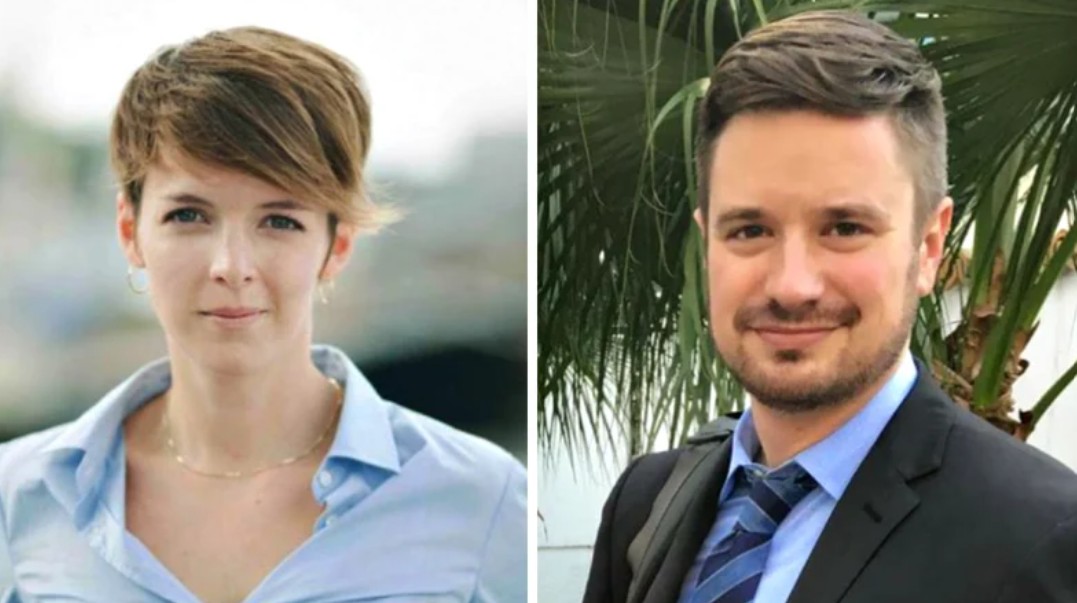Zaida Catalan Video and The Congo Controversy
Global outrage erupted when the Democratic Republic of Congo (DRC) government screened a disturbing video that appeared to show the brutal killing of two United Nations experts. The footage, shown to journalists in Kinshasa, depicted the final moments of Michael Sharp, an American peace researcher, and Zaida Catalán, a Swedish-Chilean human rights expert.

The two had been on a UN mission investigating atrocities in the volatile Kasai Central province, an area torn apart by clashes between government forces and the Kamuina Nsapu militia. Their kidnapping and execution in March 2017 became a grim symbol of the dangers faced by those seeking truth in conflict zones. The DRC government claimed the video exonerated its security forces, while the UN and human rights groups expressed horror and skepticism over its authenticity and intent.
Contents
- 1 The Shocking Video
- 2 Mission and Disappearance of the UN Experts
- 3 Government’s Narrative vs. International Skepticism
- 4 Violence in the Kasai Region: The Wider Conflict
- 5 Political and Diplomatic Tensions
- 6 The Human Tragedy Behind the Headlines
- 7 International and Legal Repercussions
- 8 Broader Implications: Trust, Accountability, and the Cost of Truth
The Shocking Video
Months later, the DRC government publicly released a video purportedly showing the execution of the two investigators. The footage, presented to reporters in Kinshasa, was said to have been recorded by members of the Kamuina Nsapu militia.
The uncensored video of Zaida Catalán’s death while on a mission in Congo
The video begins with Sharp and Catalán walking with a group of men wearing red headbands, a symbol associated with the insurgents. The footage abruptly cuts to a scene where both UN workers are seated on the ground, surrounded by armed men. Shots ring out Sharp collapses first, followed by Catalán, who is then beheaded on camera.
Government spokesman Lambert Mende stated that the video proved the militia’s responsibility and dismissed any suggestion of government involvement. “The images speak for themselves,” Mende said. “It is not our soldiers that we see executing the UN workers, but the terrorists of the Kamuina Nsapu militia.”
However, Mende refused to clarify how the government obtained the video, raising immediate suspicion. Critics suggested that the government might have been in possession of the footage long before its release, possibly indicating deeper involvement or prior knowledge of the crime.
Mission and Disappearance of the UN Experts
Michael Sharp and Zaida Catalán were part of a UN panel of experts investigating human rights abuses in the Kasai region, one of Congo’s most unstable territories. Sharp, known for his humanitarian work in conflict mediation, and Catalán, a passionate advocate for justice and gender equality, were tasked with gathering evidence of mass killings and militia violence.

On March 12, 2017, Sharp, Catalán, and their Congolese interpreter Betu Tshintela set out on motorcycles toward a remote area in Kasai Central. They were ambushed, kidnapped, and vanished without a trace. Two weeks later, their bodies were found in a shallow grave. Sharp had been shot, and Catalán had been beheaded, a detail that horrified the world and underscored the brutality of the region’s conflict.
Government’s Narrative vs. International Skepticism
The government presented the screening as an act of transparency, aiming to refute allegations that Congolese forces were behind the murders. To reinforce its position, officials also showed another clip depicting beheaded policemen, allegedly victims of the same militia.
Yet the international response was cautious and critical. Ravina Shamdasani, spokesperson for the UN Human Rights Office, confirmed that the UN had reviewed the video and found it deeply disturbing. “We are utterly horrified at what appears to be the killing of Michael Sharp and Zaida Catalán,” she said. The UN announced that it would conduct an independent investigation while urging Congo to do the same.
Many observers doubted the government’s sincerity. Analysts and human rights groups suggested that the video might have been selectively edited or used to manipulate public perception. At the time, Congo’s government was facing mounting international pressure over human rights abuses and accusations of suppressing political opposition. The release of the footage seemed to serve a political purpose to deflect blame and present the state as a victim of militia terrorism rather than a participant in systemic violence.
Violence in the Kasai Region: The Wider Conflict
The tragedy unfolded against the backdrop of escalating chaos in the Kasai region. The Kamuina Nsapu rebellion began in July 2016, after the killing of local tribal leader Kamuina Nsapu, who had opposed the central government’s authority. His death sparked an uprising that soon evolved into one of Congo’s bloodiest conflicts.
Villages were burned, civilians were massacred, and children were recruited as fighters. Both government forces and the militia were accused of atrocities. According to UN estimates, more than 400 people were killed in Kasai in less than a year, and hundreds of thousands were displaced.
Investigators later discovered over 40 mass grave sites, some containing the remains of women and children. The UN warned that if the Congolese government failed to properly investigate these killings, the International Criminal Court (ICC) might intervene. The deaths of Sharp and Catalán occurred at the height of this turmoil, during a period when tensions between militias and the government were at their peak.
Political and Diplomatic Tensions
At the time of the killings, Congo’s political landscape was in crisis. President Joseph Kabila had overstayed his constitutional mandate, which expired in December 2016, fueling widespread protests and violent crackdowns. Western nations, including the United States and members of the European Union, imposed sanctions on several Congolese officials accused of human rights abuses.
The relationship between the DRC and the UN was already fragile. Many in Kabila’s government viewed UN investigators as intrusive and politically motivated. The video’s release, therefore, was interpreted by diplomats as a strategic move a way to push back against international criticism and assert control over the narrative.
Rather than clarifying the truth, the screening deepened distrust. The UN, Western governments, and NGOs all questioned whether the government’s claim of innocence could be believed, given the pattern of state violence and misinformation surrounding previous incidents in Kasai.
The Human Tragedy Behind the Headlines
Beyond the politics and controversy lay a profound human tragedy. Michael Sharp and Zaida Catalán were not soldiers or politicians they were idealists driven by a belief in peace and justice. Sharp had spent years working in conflict zones, earning a reputation for his empathy and courage. Catalán, a former Green Party politician in Sweden, had dedicated her career to exposing human rights abuses.
Their interpreter, Betu Tshintela, a Congolese national, also paid with his life. His story highlights the immense risk faced by local collaborators who often go unrecognized yet play a vital role in international missions.
For the families of Sharp and Catalán, the release of the video was devastating. They demanded transparency and justice, calling on the UN to ensure a credible, independent inquiry. The Swedish and American governments also urged the DRC to cooperate fully and hold those responsible accountable.
International and Legal Repercussions
In response to global outrage, the United Nations launched its own investigation into the killings. Several suspects linked to the Kamuina Nsapu militia were later arrested, though many observers doubted whether those trials truly represented justice.
Human rights organizations continued to press for the International Criminal Court to intervene, citing evidence of widespread war crimes and a lack of credible domestic accountability. Meanwhile, pressure on the DRC government grew, as Western nations demanded concrete action against both militia violence and abuses by state security forces.
Despite multiple investigations, questions remain unanswered: How did the killers know the UN experts’ movements? Why did the government possess the video so quickly? And were elements within the security forces complicit? These lingering doubts have kept the case open in the court of public opinion.
Broader Implications: Trust, Accountability, and the Cost of Truth
The murder of Sharp and Catalán revealed a deeper crisis within international peacekeeping operations. It exposed the vulnerability of UN personnel in hostile environments where they rely on cooperation from governments that may themselves be perpetrators of violence.
The tragedy also underscored the accountability gap in global justice. Without transparent investigations and political will, crimes against humanitarian workers risk becoming just another statistic in the world’s forgotten wars.
For many, the deaths of the two investigators stand as a reminder that truth-seeking can be fatal, especially in regions where power and impunity reign unchecked.
The video showing the execution of Michael Sharp and Zaida Catalán shocked the world not only for its brutality but for what it revealed about the state of governance, justice, and violence in the Democratic Republic of Congo.
While the government insists it was not responsible, the mystery surrounding the video’s origins and the killings themselves continues to cast a long shadow over Congo’s relationship with the international community.
Until those truly responsible whether militia or government forces are brought to justice, the deaths of Sharp and Catalán will remain a haunting reminder of the high price of uncovering truth in a world too often ruled by silence and fear.
Daily News -Ghost Rider Cartel Video and The Global Reaction
DoorDash Girl SA Original Video Sparks Widespread
Nama Cooler Box Unblurred Video and That Viewers
Synthetic Man Video Leak and Public Reaction
Balin Miller Death Fall Livestream Video on TikTok, Reddit, Twitter and El Capitan Ascent
Manchester Synagogue Stabbing Attack Shooting Video
Susanna Gibson Payne Video and From Political to Scandal

